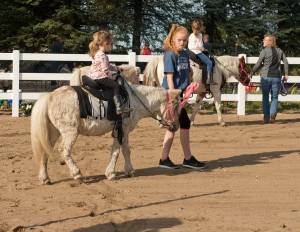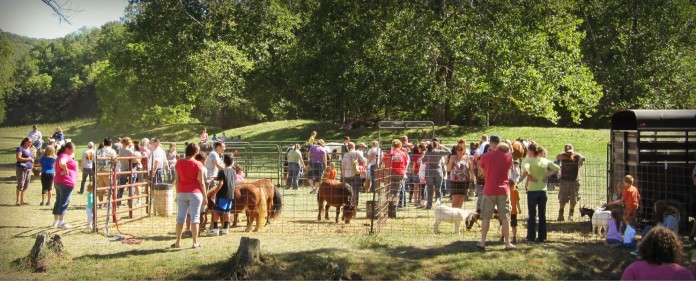Agritourism benefits farmers by diversifying income, advertising, brand recognition, and providing opportunity for retail sales. Farmers enjoy getting to know their customers and teaching them about food production. But agritourism isn’t for every farm. Consider the following to determine if agritourism is a good fit for your operation:
1Privacy
Agritourism puts your farm and your family on display. It’s important the entire family is on board with the idea of their home as a tourist destination; especially if family members will be workers.
2Location
Eye appeal from a busy road is ideal for an agritourism destination. Nearness to population centers gives customers easy access and encourages customers to return frequently. A metro area within 25 miles of your location can provide you with a steady stream of customers and quick access to supplies.
You don’t have to give up your agritourism dream because your farm is off the beaten track, but you do have to make an extra effort to help visitors find you. Make sure your farm address is listed online, in-print, and by GPS. Include a map on your website. Professional, clear road signage is critical.
3Staff
The best agritourism staff love people. Their role at your farm is part entertainer, part educator.

This fall, a staff of 3 family members led us on a tour of a local fruit orchard. The son described the current operation, then delivered tourists via hay wagon to his father, who told us the farm’s history. The tour ended in the country store with the mother sharing retail and value-added activities. Tourists learned a lot, but more important, felt like friends of the family.
4Zoning and permits
Locate your property parcel number on the county auditor website. Consult your county planning agency to ensure your zoning allows agritourism.
Recent legislation made it easier for Ohio farms to conduct agritourism by limiting county and township authority to prohibit agritourism activities. Learn more from Farm and Dairy article, New Ohio agritourism law provides clarity, protection for operators.
Local governments may require an application and business plan to conduct agritourism activities on your farm. Licenses and permits from state and county may apply depending on the nature of your agritourism enterprise.
5Safety and liability
Farming is the 6th most dangerous occupation in the world. The nature of farm work includes heavy equipment, large animals, and structural hazards. It’s impossible to ensure 100% safety, but reducing the risk of injury and maintaining a safe environment for visitors must be your first priority.
Recent legislation supporting agritourism in Ohio offers farm operators additional liability protection from civil lawsuits, but farmers are still responsible to carry a level liability insurance appropriate for their agritourism operation.
6Facilities and property
Rest areas, retail stand/store, sanitation stations, parking, storage and waste disposal facilities are applicable to most agritourism destinations. If you hire employees, break area and a place to store personal items should be considered.
On-farm food service is subject to regulation and inspection by state government. A commercial kitchen license is required to prepare food on-site. Mobile food vending and produce sampling may require additional permits. Contact the local health department.
7Advertising
Advertising is the largest operating expense for many agritourism businesses. Many famers underestimate the cost of marketing:
- Social media promoted ads average $.60 to $1.35 per click.
- An ad in the local advertiser costs $39 a week.
- A chamber of commerce email ad to community members and area businesses costs $50.
- 50 custom yard signs cost $150+ depending print selections.
- An ad in a travel guide costs $500+ dollars depending on size.
Plan an advertising budget and strategy to market your agritourism destination for success.
8Biosecurity
Agritourism venues are biosecurity high risks because many visitors have close contact with multiple animals. Swine and avian flus are major concerns. Visitors can unknowingly carry infectious agents to the farm on clothes and shoes. Pathogens spread when visitors pet, feed, and handle animals. For Animal Disease information and control methods visit the USDA Animal and Plant Health Inspection Service website.













